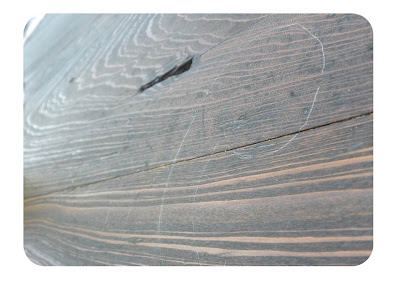My Grandma is one of the best bakers that
I know. Sure, there’s been some kitchen mishaps, such as pies bubbling over and
catching the oven on fire, or the legendary “earthquake cake,” which occurred
when we iced a layered cake before it was all the way cooled and it proceeded
to crumble apart. Overall though, I have fond memories of learning to bake
beside my grandma.
 |
| Ingredients |
So when I discovered that the milk in my
fridge was going sour, I of course thought of her coffee cake recipe, in which
she often used soured milk in place of buttermilk. The resulting dessert is
moist and delicious. This treat was a staple whenever we came to visit or for
special occasions like Christmas morning.
 |
| Consistency of crumble topping saved out |
Begin by mixing the flour, brown sugar,
white sugar, cinnamon, butter, and pecans. Mix this until crumbly. You’ll need
to save out ¾ cup of this mixture, as it will be crumbled on top.
Add to the mixture the eggs, milk, and
soda. Once mixed you’ll begin to notice lots of air bubbles, which help to keep
the cake fluffy. If you don't happen to have buttermilk or soured milk on hand, you can make soured milk by adding 1 tablespoon of lemon juice or vinegar to 1 cup of regular milk and allowing it to stand for five minutes.
Pour the mixture into greased pans. I
used two square pans, but a single 9x13 size pan would work.
Sprinkle the
crumble mixture on top. Bake in oven for 25-30 minutes at 350 degrees.
Personally, I think that this cake is
best enjoyed with a fresh cup of coffee. Yum!
Grandma Alice's Coffee Cake
- 1 c. brown sugar
- 1 c. white sugar
- 1/2 c. butter or margarine
- 2 c. flour
- 1 tsp. cinnamon
- 1/2 c. nuts (optional- I find I prefer pecans)
- 2 eggs
- 1 c. buttermilk or soured milk
- 1 tsp. soda
- Combine the first 6 ingredients until crumbly. Take out 3/4 cup for topping.
- To the rest, add eggs, buttermilk and soda. Beat thoroughly. Pour into a 9x13-inch pan or two 9x9-inch pans (greased) and sprinkle with topping.
- Bake at 350 degrees for 25 to 30 minutes.


























